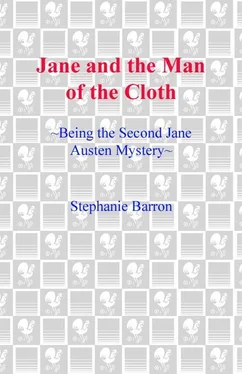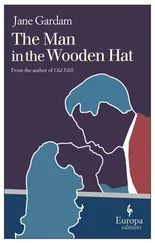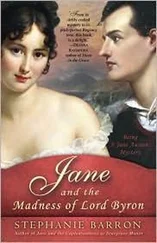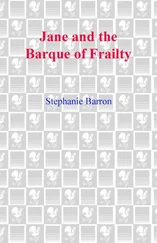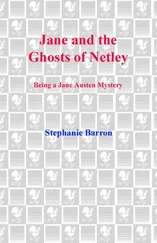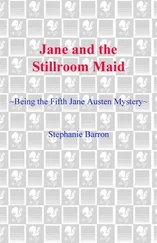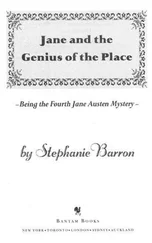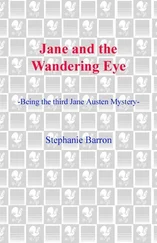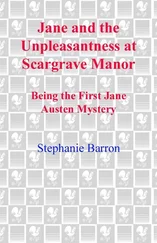Stephanie Barron - Jane and the Man of the Cloth
Здесь есть возможность читать онлайн «Stephanie Barron - Jane and the Man of the Cloth» весь текст электронной книги совершенно бесплатно (целиком полную версию без сокращений). В некоторых случаях можно слушать аудио, скачать через торрент в формате fb2 и присутствует краткое содержание. Жанр: Исторический детектив, Иронический детектив, на английском языке. Описание произведения, (предисловие) а так же отзывы посетителей доступны на портале библиотеки ЛибКат.
- Название:Jane and the Man of the Cloth
- Автор:
- Жанр:
- Год:неизвестен
- ISBN:нет данных
- Рейтинг книги:3 / 5. Голосов: 1
-
Избранное:Добавить в избранное
- Отзывы:
-
Ваша оценка:
- 60
- 1
- 2
- 3
- 4
- 5
Jane and the Man of the Cloth: краткое содержание, описание и аннотация
Предлагаем к чтению аннотацию, описание, краткое содержание или предисловие (зависит от того, что написал сам автор книги «Jane and the Man of the Cloth»). Если вы не нашли необходимую информацию о книге — напишите в комментариях, мы постараемся отыскать её.
Jane and the Man of the Cloth — читать онлайн бесплатно полную книгу (весь текст) целиком
Ниже представлен текст книги, разбитый по страницам. Система сохранения места последней прочитанной страницы, позволяет с удобством читать онлайн бесплатно книгу «Jane and the Man of the Cloth», без необходимости каждый раз заново искать на чём Вы остановились. Поставьте закладку, и сможете в любой момент перейти на страницу, на которой закончили чтение.
Интервал:
Закладка:
41
Nuncheon was a common term for food taken between breakfast and dinner — which in the country was usually eaten in the late afternoon, around four o'clock — since the term luncheon, or lunch, did not exist. — Editor's note.
42
Eliza refers here to the March 1804 execution of the Due D'Enghien, who was of royal Bourbon blood. Napoleon had the duke seized, imprisoned, secretly tried, and executed, in the wake of several Royalist plots to dethrone him. — Editor's note.
43
Venturers were what we might call venture capitalists — titled or simply wealthy gentlemen who invested in others’ business ventures. — Editor's note.
44
The cutter Jane describes probably came about near Charton Bay, two miles west of Lyme proper; this was a lonely stretch of shoreline favored by smugglers. — Editor's note.
45
Captain Fielding is referring to the Royal Navy practice of pressing smuggling captains into active service when apprehended. Such seamen were known to be remarkably skilled, from long experience of landing on difficult coasts in bad weather and under cover of darkness; exactly the sort of captains the Royal Navy needed in time of war. — Editor's note.
46
The Pinny, in Austen's time, was a heavily wooded wilderness a short walking distance from town. She describes it in Persuasion as possessed of chasms between romantic rocks, where the scattered forest trees and orchards of luxuriant growth declare that many a generation must have passed away since the first partial falling of the cliff prepared the ground for such a state….” There were to be additional land-tails in subsequent years, the most spectacular of which took place in 1839. It was the ideal place for a smugglers’ band to meet. — Editor's note.
47
Jane alludes here to the whittle — a shawl of red wool traditionally worn by the women of Lyme's laboring class. By the turn of the eighteenth century, however, the tradition was on the wane, as Lyme residents of all classes were increasingly exposed to the cosmopolitan dress of fashionable visitors. — Editor's note.
48
Tom Musgrave, a charmingly vacant womanizer in The Watsons manuscript, should not be confused with the more finely drawn Musgrave family of Persuasion. It was Louisa Musgrove who received a near-fatal head injury in falling from the Cobb — an event that may have been inspired by Cassandra Austen's misfortune recounted in this diary. Austen clearly liked the sound of the name and its variations; and her godmother was Jane Musgrave of Oxfordshire, a relative of her mother's. — Editor's note.
49
Frank Austen had recently fallen in love with Mary Gibson, a girl of Ramsgate whom Jane found disappointing — she considered her as vulgar as her town. Frank married Miss Gibson in 1805; they had six sons and five daughters before her death in childbirth. — Editor's note.
50
George III and his retinue made a habit of visiting the Dorset village of Weymouth, where his brother the Duke of Gloucester often stayed. — Editor's note.
51
Henry refers here to his stepson, Hastings de Feuillide, Eliza's sickly son. The boy died in 1801 at the age of fourteen. — Editor's note.
52
A spigot lanthorn is as Austen described it in the first chapter — a curiously shaped lamp designed specifically for signaling. It was tall, cylindrical, and entirely closed except for the spigot projecting from one side, the open end of which could be covered and uncovered by the signaler's hand, emitting a blink of light. It was frequently employed by smugglers. — Editor's note.
53
French brandy was considered “raw” when it hit English shores, because it was colorless. The smugglers would mix it with burnt sugar to give it the deep golden hue the English expected, and probably thinned it with water as well. — Editor's note.
54
An exclusive men's club in Pall Mall. — Editor's note.
55
The length of a woman's train increased with her desire for elegance; Austen usually ascribes a long sweep to her more vulgar characters, such as Isabella Thorpe in Northanger Abbey. — Editor's note.
56
Much of this description of the past few days, and Austen's circle of acquaintance in Lyme, may be found almost verbatim in the surviving letter she wrote to Cassandra the same morning as this journal entry. A copy of that letter was not included in this journal, but can be found in the collected correspondence (Jane. Austen's Letters, Deirdre LeFaye, ed., Third Edition. Oxford: Oxford University Press, 1995, Letter #39, page 92). — Editors note.
57
“A brisk dance characterized by intricate figures and frequent changing of partners. Other dances common to the country Assembly Rooms were the minuet — which generally opened a ball — the ecossaise, the contredanse, and a variety of Scotch reels and English country dances. The waltz, considered “fast,” made its first London appearance by 1812, and the quadrille — a type of square dance with music in five movements of varying tempos — in 1816. — Editor's note.
58
Free Trade was the term smugglers applied to their business, since the purpose of smuggling goods into England was to avoid the numerous and costly taxes applied to a wealth of imported items. — Editor's note.
59
A curricle was a light, fast equipage that held only two people, and was usually drawn by one or two horses easily managed by a male passenger. It was considered a smart carriage, usually owned by young men, rather like the sports car of today. Austen, for example, has Henry Tilney drive one in Northanger Abbey, to the utter transport of his companion, Catherine Morland. — Editor's note.
60
Mathew Barnewall is described by Deirdre LeFaye, editor of the 1995 edition of Jane Austen's Letters, as having been a “missing heir” to the viscountcy of Kingsland, whose early life was spent as an illiterate potboy in the slums of Dublin. His claim to his property and title was in dispute at this time. Whether Austen was aware of Barnewall's history is unclear, but it probably accounts for her perception of the incongruities in his personal demeanor and character — a strange mix of crudity overlaid with hasty polish. — Editors note.
61
Miss Crawford describes the common practice among genteel families of ordering the construction of a new carriage for a wedding — usually at the groom's expense. — Editor's note.
62
This letter no longer survives in the collected correspondence. Cassandra Austen is believed to have destroyed many of Jane's letters after her sister's death. — Editor's note.
63
Austen's description of the tunnel corresponds to several discovered in recent years throughout the coastal towns of the Channel counties. Some lead to landing areas from the cellars of inns, which often served as smugglers’ central meeting places and storage areas for contraband; others, from manor houses on the cliffs above; and still another, from a family vault in the crypt of a church — used to store brandy barrels, no doubt, instead of dead ancestors. — Editor's note.
Читать дальшеИнтервал:
Закладка:
Похожие книги на «Jane and the Man of the Cloth»
Представляем Вашему вниманию похожие книги на «Jane and the Man of the Cloth» списком для выбора. Мы отобрали схожую по названию и смыслу литературу в надежде предоставить читателям больше вариантов отыскать новые, интересные, ещё непрочитанные произведения.
Обсуждение, отзывы о книге «Jane and the Man of the Cloth» и просто собственные мнения читателей. Оставьте ваши комментарии, напишите, что Вы думаете о произведении, его смысле или главных героях. Укажите что конкретно понравилось, а что нет, и почему Вы так считаете.
